DroidForums.net | Android Forum & News
You are using an out of date browser. It may not display this or other websites correctly.
You should upgrade or use an alternative browser.
You should upgrade or use an alternative browser.
Boosting cell signal
- Thread starter Bremen
- Start date
If you're on Verizon, go to Verizon Wireless Network Extender | Verizon Wireless. It's an up-front cost but NO MONTHLY charges.
Oooo. Well, do you have any old "car cellular antenans" and the cables for them laying around? Or do you have a friend in the Cellular phone business who used to do "install kits" for "car phones"? If so, a pair of those old roof-mount magnetic car antennas coupled together with a long cable can be an effective passive repeater. You mount one onto a metal plate that's at least 10" in diameter, such as a trashcan lid, sticking straight up. Position that on a roof, preferably in an area that faces the best coverage nearby. These antennas often have a hinge on them which allow them to be angled. Make sure that whatever angle the flat "lid" is (*even if flat against a sloped roof*), be sure the antenna is still pointing straight up. As an alternative, it can be mounted inside the house in the attic in similar fashion.
Then take the cable and either run it through the roof and down to the main area of the home, or down the side of the house and in along side a window. Once inside, do the same thing you did on the roof, but use a small round disc, even an aluminum pie plate will work, but you'll need a magnet on the other side of the plate or glue to hold it on, and just like on the roof, mount the other antenna to the center, but this time mount the plate and antenna in a place where the antenna can point down, such as a ceiling in a hallway for instance.
Using this passive repeater method, the signal from the distant towers will "see" your roof antenna, the signal will travel down the cable and out the antenna inside, and vice versa. It's not the best option but certainly the least expensive. If you don't have these antennas or the cable, you can find them real cheap on eBay and also check local Craigslist.org and Freecycle.org for people giving them away.
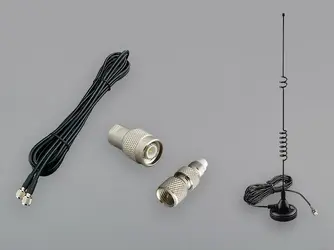
Then take the cable and either run it through the roof and down to the main area of the home, or down the side of the house and in along side a window. Once inside, do the same thing you did on the roof, but use a small round disc, even an aluminum pie plate will work, but you'll need a magnet on the other side of the plate or glue to hold it on, and just like on the roof, mount the other antenna to the center, but this time mount the plate and antenna in a place where the antenna can point down, such as a ceiling in a hallway for instance.
Using this passive repeater method, the signal from the distant towers will "see" your roof antenna, the signal will travel down the cable and out the antenna inside, and vice versa. It's not the best option but certainly the least expensive. If you don't have these antennas or the cable, you can find them real cheap on eBay and also check local Craigslist.org and Freecycle.org for people giving them away.

Wilson electronics Sleek booster from Amazon for $85. Not free. Should give 18db +/- signal increase. Leverify ave phone near a window with strongest signal for free. Be sure to verify with the actual signal level. The bars tell very little.
Correct, the Wilson Cellular Repeaters are among the best out there, but like the "passive" method above, it requires installation of an antenna on the roof. The Repeater modules themselves have their own short "stubby" cellular antenna on them or built inside for mounting interior to the home. Also, the OP did say he was looking for a "free" solution, so I suggested the above. There are also ways to craft your own antenna, such as from a Pringles can or other container, to make a "cantenna". If you search on Youtube for them, there are plenty of DIY instruction videos.
I saw boosters on Amazon for as low as $144.99 new and $124.14 used (Amazon.com: Wilson Electronics MobilePro Cell Phone Signal Booster for Car and Home / Office with 4" Magnet Mount Antenna – For Multiple Users: Cell Phones & Accessories), but am not seeing the one you mentioned for $85. Could you post a link for the OP?
My auto correct should've said Verify the window with strongest cell service. The Wilson sleek also has available accessories.
The price can vary by $5 day to day. Today its $85 at Amazon.
Amazon.com: Wilson Electronics Sleek Cell Phone Signal Cradle Booster for All Cell Phones with Mini Magnet Mount Antenna - For Single User: Cell Phones & Accessories
The price can vary by $5 day to day. Today its $85 at Amazon.
Amazon.com: Wilson Electronics Sleek Cell Phone Signal Cradle Booster for All Cell Phones with Mini Magnet Mount Antenna - For Single User: Cell Phones & Accessories
OK, so I originally saw the device you mentioned above but excluded it from my search since it only works while the phone is in the cradle. It would be fine for a car mount installation as it was intended, and yes - can also be used indoors as a speakerphone or bluetooth wireless phone, but the cradle makes it essentially stationary. I was trying to provide for the OP an option that would allow him freedom to move about the house and have better cellular service indoors in all locations than he has now.
Also, you raised one point I should have mentioned - the antenna can be positioned indoors in front of a window where signal levels are sufficient, however its best results will be mounted either above or at roof line. The Magnetic Mount "car antennas" can be placed on a metal surface either inside or outside the window, so that the metal surface can act as a "ground plane". Without a ground plane, they will perform poor to average, possibly unacceptable.
The ones I find are best are supplied with a YAGI antenna (directional antenna) which can be mounted on the roof antenna pole below your TV antenna (if you have one), or on a strap mount around a chimney or standpipe. Since they are directional, they can be pointed directly toward a tower and will provide impressive results. The best units use a separate indoor antenna and are designed to have the actual electronic repeater installed and powered in an out of the way place, such as the attic. See below.

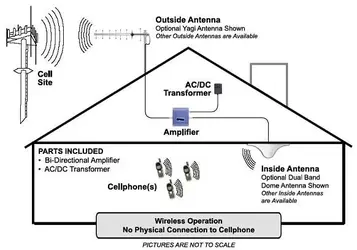
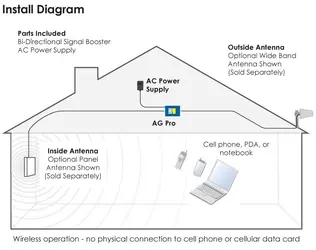
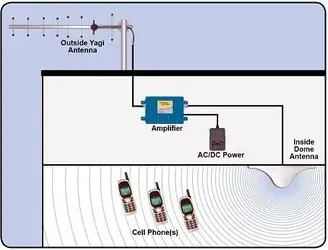
Also, you raised one point I should have mentioned - the antenna can be positioned indoors in front of a window where signal levels are sufficient, however its best results will be mounted either above or at roof line. The Magnetic Mount "car antennas" can be placed on a metal surface either inside or outside the window, so that the metal surface can act as a "ground plane". Without a ground plane, they will perform poor to average, possibly unacceptable.
The ones I find are best are supplied with a YAGI antenna (directional antenna) which can be mounted on the roof antenna pole below your TV antenna (if you have one), or on a strap mount around a chimney or standpipe. Since they are directional, they can be pointed directly toward a tower and will provide impressive results. The best units use a separate indoor antenna and are designed to have the actual electronic repeater installed and powered in an out of the way place, such as the attic. See below.




There are better home solutions as you mentioned. OP mentioned free. The better home solutions can carry Upto 5 different devices at one time. They also allow roaming throughout a single room. They are also far from cheap. I didn't mention the yagi due to cost. For whole house solution a femtocell would be best. Cheapest room/multi device from Wilson is about $300. The sleek was closest to free. It can also be powered by battery pack for emergency while hiking.
Correct, the Wilson Cellular Repeaters are among the best out there, but like the "passive" method above, it requires installation of an antenna on the roof. The Repeater modules themselves have their own short "stubby" cellular antenna on them or built inside for mounting interior to the home. Also, the OP did say he was looking for a "free" solution, so I suggested the above. There are also ways to craft your own antenna, such as from a Pringles can or other container, to make a "cantenna". If you search on Youtube for them, there are plenty of DIY instruction videos.
There are better home solutions as you mentioned. OP mentioned free. The better home solutions can carry Upto 5 different devices at one time. They also allow roaming throughout a single room. They are also far from cheap. I didn't mention the yagi due to cost. For whole house solution a femtocell would be best. Cheapest room/multi device from Wilson is about $300. The sleek was closest to free. It can also be powered by battery pack for emergency while hiking.
Agreed, and as both I and you said, the OP was looking for a free solution. I also agree that there are both less and more expensive solutions. I believe we are both saying essentially the same thing.
Back to what the OP inquired about.
Here (My homemade projects: DIY cell phone GSM 3G signal booster antenna), is a home-brew booster which uses common household items (even the coax cable can be either the standard RG-8 or you can use common cable TV cable, RG-58), to manufacture. I found this with a Google search for "DIY Cellular booster". It doesn't take a whole lot of talent. Just some basic know-how for measuring the length of the wire, some basic geometry to understand and reproduce a 90 degree bend, and some low-level mechanical skill with pliers, tape, scissors, a wire cutter, a hacksaw or Dremel with a cutting wheel, and a screw driver. The terminal blocks are very inexpensive and can be bought at your local Radio Shack or other electrical supply store.
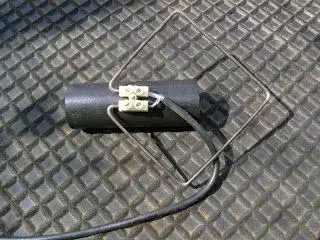
The pics of his phone with 2 bars before and 5 bars after at the bottom of his blog are pretty impressive.
Truth is, a simple piece of coax that is stripped back to expose the center conductor, made at a length that is close to half the length of the wave can be an effective antenna. In Cellular, there are several bands that are used, but the most common for CDMA phones (think Verizon), are 800Mhz and 1,900Mhz, and the 1/4 wavelength for these two bands is 3.51" for 800Mhz and 1.48" for 1,900Mhz. So, if you took the end of a coaxial cable and stripped it back, exposing the center conductor that is 3.51" long, and then twisted the shield into an opposite 3.51" conductor (3.51"-3.54" is a reasonably acceptable length variance since at 3.54" it would cover a range of frequencies near 800Mhz and below), and placed them at diametrically opposing orientation (180 degrees), you've effectively created a standard 1/2 wave dipole antenna (see below), which measures 7.02" tip to tip and that alone is sufficient for the external antenna to capture the incoming signal and transmit the outgoing signal. For the 1,900Mhz band, the antenna's two ends would be 1.48" instead.
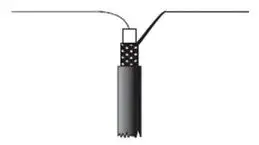
For the internal end, you could actually simply do the same thing again. The amount of "Gain" you would accomplish is minimal, but it may be enough to get you over the hump. Furthermore if you hold the inside end's center conductor right against the phone's back as shown here:
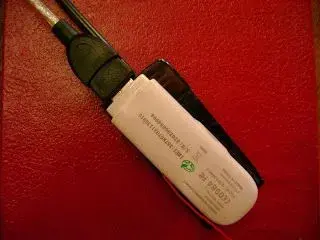
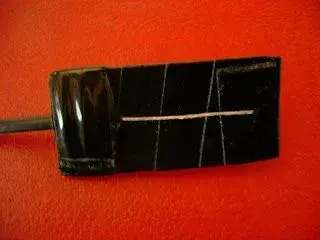
...the minimal gain will be enhanced due to the phone's close proximity to the primary element conductor of the cable carrying the signal out and in. In the DIY antenna above, he's managed to make an external antenna that had considerable gain, probably in the range of 7-11dbm, and that helps to effectively amplify the signal at the antenna on the phone, since the "collector" antenna is a larger element and is balanced, tuned, and likely low in SWR. It also helps tremendously that the external antenna is attached high up on an antenna pole.
All that said, inexpensive or free solutions are rarely the best.
I've noticed since rooting and using custom roms that my phone does a better job at staying on 3g in the house
Another suggestion worthy of consideration.
Another suggestion worthy of consideration.
Lol yes like I said this will fix the signal issue 75% of the time and it's a 10 second fix.
Dave
Ok, trying to wrap my head around how rooting would have any effect on signal reception. I mean this seams it would be a perception as opposed to actual signal gain. Rooting does nothing to enhance signal reception at all. It is simply unlocking the phone's operating system to allow you full access to change things they don't want you messing with, like their proprietary apps etc. Making this software change does nothing to enhance signal reception. Am I missing something here.I've noticed since rooting and using custom roms that my phone does a better job at staying on 3g in the house
I have held off rooting my 5.5 inch LG optimus Pro until I am at the end of contract and or warranty on the phone. Which I love by the way, the phone is awesome. Although thinking I might like windows phone to sync all devices but not sure. Definitely don't want Iphone, so limited, can't add microsd or use 3rd party apps, not for me lol. So what am i missing and what more would I gain by rooting now. If I brick it rooting warranty won't replace it due to rooting.
I too live out in country with spotty coverage in the house and have no money for expensive repeater. On ATT by the way..... thanks all
love the board
don
Similar threads
- Replies
- 3
- Views
- 1K
S
